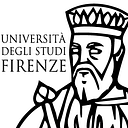A New Era of Italian know-how in fashion: Exploring the (im)possible dialogue of craftsmanship and industry
From Firenze University Press Journal: Fashion Highlight
Gianni Denaro, Sapienza University of Rome
Andrea Pruiti, Sapienza University of Rome
A significant number of European consumers — particularly those belonging to Gen-Z — are increasingly appreciating sustainable practices and are demanding fashion brands to be more responsible regarding social and environmental impacts, despite the challenges posed by price. (Granskog et al., 2020; European Commission, 2023; Euromonitor International, 2023). Furthermore, to allow consumers to enhance their awareness when purchasing, the European Commission is proposing a “Digital Product Passport” that calls for transparency within the entire value chain of a product (European Commission, 2022). Taking such actions would enhance the relationship between brands and the supply chain, which in turn could facilitate the development of data platforms (Hindarto et al, 2024; Damvakeraki et al, 2024; Rinaldi et al., 2022).For all these reasons, fashion consumers are regaining an interest in local craftsmanship — and so in the artisanal tradition –, seen as a model that adheres more faithfully to those needs of sustain-ability and authenticity previously mentioned. Particularly in Italy, which had developed a highly identity-oriented fashion craftsmanship model, this renowned interest can be the occasion to build a new productive model that can take the best from both craftsmanship and industry. On one hand, craftsmanship practices, rooted in local traditions, allow to produce distinct items that reflect the artisan’s skill and creativity. In contrast, industrial production can constantly implement new technology to become more sustainable and it can efficiently distribute products on a global scale. Fashion designers should exploit and valorize these elements to create products that retain cultural and local authenticity while distributing globally.
ON THE CONCEPT OF “KNOW-HOW”: BETWEEN TERRITORY AND CRAFTSMANSHIP
The term “know-how” implies “knowing how to do things” and includes the arts of making, the ability to produce, the knowledge of materials, and the transformation processes linked to the territory (Goretti, 2017). To put it in De Fusco’s terms, it is based on specializations, processes, and components specifically linked to the original territory, which are founded on values and production techniques typical of historicized craftsmanship (2009). This craftsmanship is also characterized by the artisan’s ability to autonomously intervene in the product, using hands and skills as tools for managing materials and producing artifacts (Sennett, 2009). What is called a “master craftsmen” are in fact capable of autonomously managing every production phase and they can develop a deep understanding of the world and territory through the constant fusion of abstract knowledge and experience (Buono, 2018). In this sense, the environment is an object of observation and study, from which they have developed techniques and skills to build products containing strong material and immaterial quality (Micelli, 2016; Cristallo, 2014). The territory therefore represents, as highlighted by Fry et al. (2016), an entire cultural world, rich in authenticity and values transmitted through artifacts. By applying these considerations to the specific case of fashion, product quality becomes not simply related to the concept of “handmade”, but it also depends on craftsmen’s ability to transfer the connection with the territory in the final fashion item (Micelli, 2016).
DOI: https://doi.org/10.36253/fh-2713
Read Full Text: https://riviste.fupress.net/index.php/fh/article/view/2713
